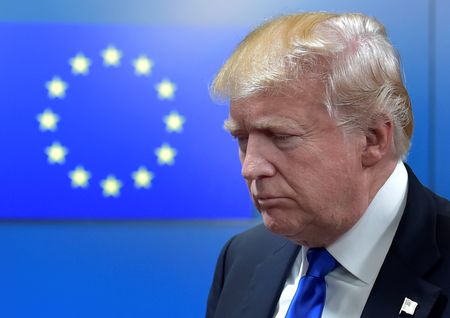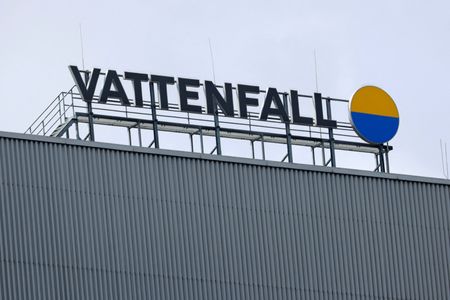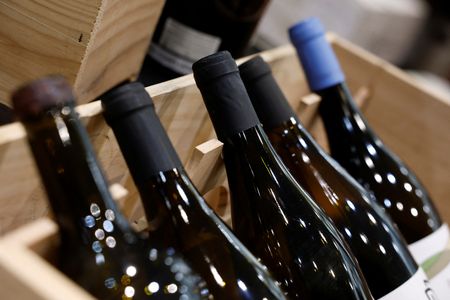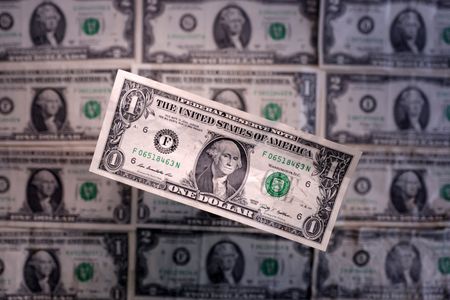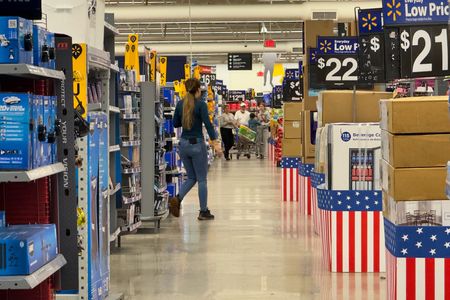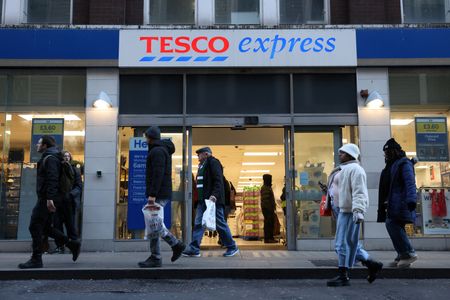BRUSSELS (Reuters) – The United States and the European Union agreed a joint statement on the framework trade deal struck at the end of July to end months of uncertainty for industries and consumers.
Here are the main elements of the statement, produced after weeks of wrangling, spelling out what both sides have agreed to.
* EU TO ELIMINATE TARIFFS ON ALL U.S. INDUSTRIAL GOODS: The EU is to remove tariffs on all U.S. industrial goods and provide preferential market access for a wide range of U.S. seafood and agricultural goods, including tree nuts, dairy products, fresh and processed fruits and vegetables, processed foods, planting seeds, soybean oil, and pork and bison meat.
* BASELINE U.S. TARIFF RATE ON EU GOODS: Almost all EU goods entering the U.S. will be subject to a 15% baseline tariff. The 15% tariff is not added to any existing rates. It is designed to be the maximum rate, except for limited instances of pre-existing rates being higher.
* CARS: Cars and car parts will be subject to the 15% tariff, compared to the 27.5% they face now, but only from the first day of the month in which the European Union introduces as legislative proposal to remove its tariffs on U.S. industrial goods.
The joint statement also says that the U.S. and the EU intend to accept and provide mutual recognition of each other’s standards for cars.
* PHARMACEUTICALS AND SEMICONDUCTORS: EU pharmaceuticals and microchips and lumber will be subject to 15% tariffs. This will only be the case after the United States concludes Section 232 investigations and sets new global tariff rates for the two sectors. For the EU, the maximum rate would be 15%. For now, there are only subject to low or zero pre-existing duties.
* OTHER SECTORS: The United States will apply only the Most Favoured Nation (MFN) tariffs from Sept 1 on the following EU products: unavailable natural resources (including cork), all aircraft and aircraft parts, generic pharmaceuticals and their ingredients and chemical precursors.
* METALS: The joint statement does not mention any specific tariff rates for EU metals exports to the U.S., saying only that both sides “intend to consider the possibility to cooperate on ring-fencing their respective domestic markets from overcapacity, while ensuring secure supply chains between each other, including through tariff-rate quota solutions.”
EU and US officials have previously said tariffs on European steel, aluminium would stay at 50%, with the same tariff also applying from August 1 to copper.
EU officials have said European metal exports within an agreed quota would face the most-favoured nation tariff rate agreed under WTO rules, which are low and in some cases zero depending on the grade. Exports outside of the quota would be subject to 50% tariffs.
* WINE AND SPIRITS: The written joint statement does not mention the wine and spirits sector specifically. It says however, that both sides “agree to consider other sectors and products that are important for their economies and value chains for inclusion in the list of products for which only the MFN tariffs would apply.”
* STRATEGIC PURCHASES: The European Union commits in the joint statement to procure U.S. liquefied natural gas, oil, and nuclear energy products with an expected offtake valued at $750 billion through 2028.
The EU also declares its intention to buy at least $40 billion worth of U.S. AI chips for its computing centres.
The EU also plans to work with the United States to adopt and maintain technology security requirements in line with those of the United States to avoid technology leakage to “destinations of concern.”
* European companies are to invest $600 billion in across strategic sectors in the United States through 2028. EU officials said the investment pledge was based on the combined investment intentions expressed by European companies.
* DEFENCE PROCUREMENT: EU member states will purchase U.S. military equipment. The deal does not specify an amount.
* OTHER ITEMS: The EU will work with the U.S. to streamline requirements for sanitary certification for U.S. pork or dairy products.
The two sides will also cooperate on investment screening and export controls as well as addressing ‘non-market’ policies, such as China’s subsidised production.
* The EU will work to address the concerns of U.S. producers regarding the EU deforestation law to avoid undue impact on trade, because production in the U.S. poses “negligible risk” to global deforestation.
* The EU commits to work to provide additional flexibilities to U.S. small and medium sized companies concerned about the impact of the EU’s Carbon Boarder Adjustment Mechanism – the law that imposes a tax on goods imported to the EU from regions which do not have CO2 emissions laws as strict as in Europe.
* DIGITAL SERVICES: The joint statement says that the United States and the European Union commit to address unjustified digital trade barriers and that the EU confirms that it will not adopt or maintain network usage fees.
The statement also says the US and the EU will not impose customs duties on “electronic transmissions”.
($1 = 0.8669 euros)
(Reporting by Jan Strupczewski, Philip Blenkinsop, Julia Payne and Kate Abnett; Editing by Richard Lough, Joe Bavier and Ros Russell)

